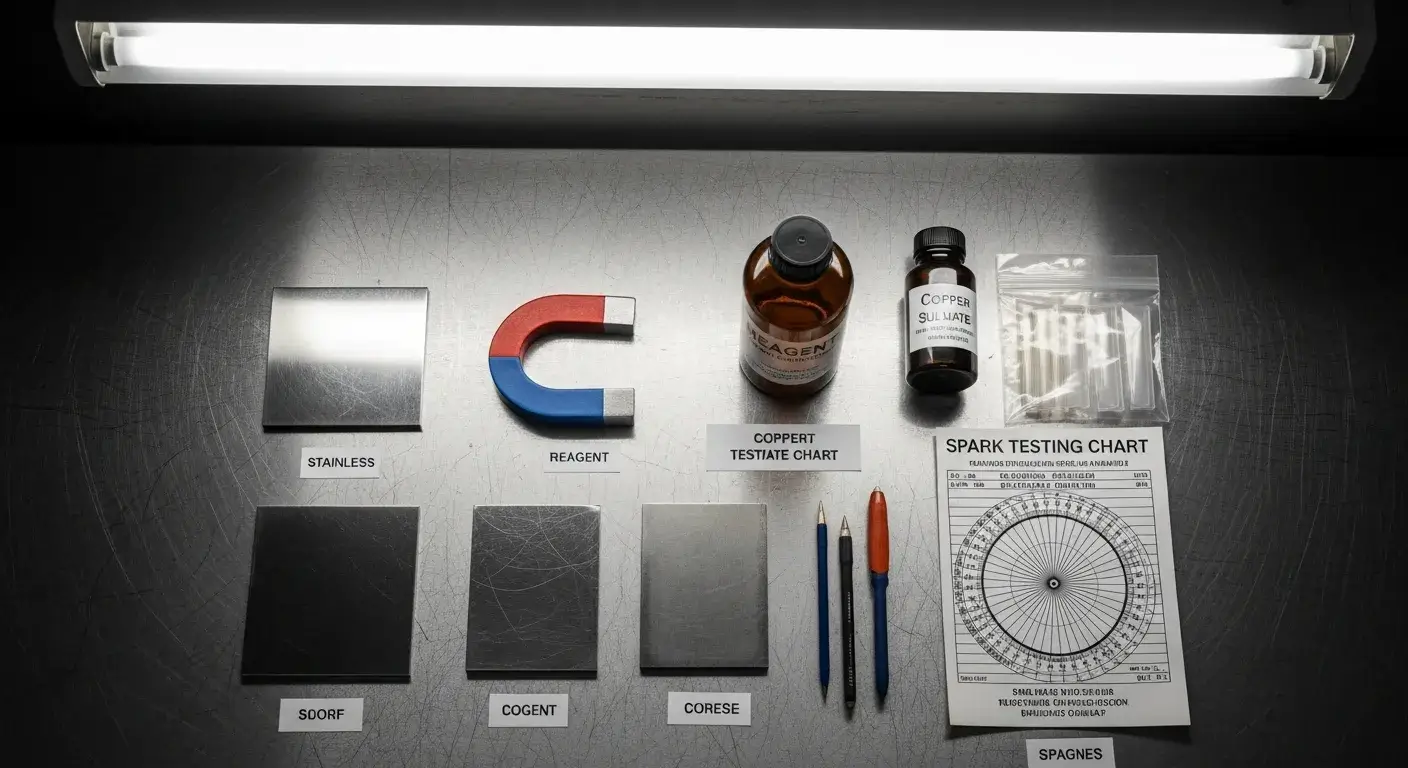
Want to identify the stainless steel you're using but not sure how? You're not alone — it can be confusing.
There are quick and easy ways to tell what grade of stainless steel you have using visual, magnetic, and chemical clues1.
You don't need a lab to get started. Let's explore simple tests that work.
Why Is It Important to Identify Stainless Steel Grades?
It’s frustrating to buy or use steel without knowing if it’s right for your needs.
You might pick the wrong type — it could rust or fail.
Stainless steel grades2 differ in strength, corrosion resistance, and magnetism. Knowing the grade helps ensure safety and performance.
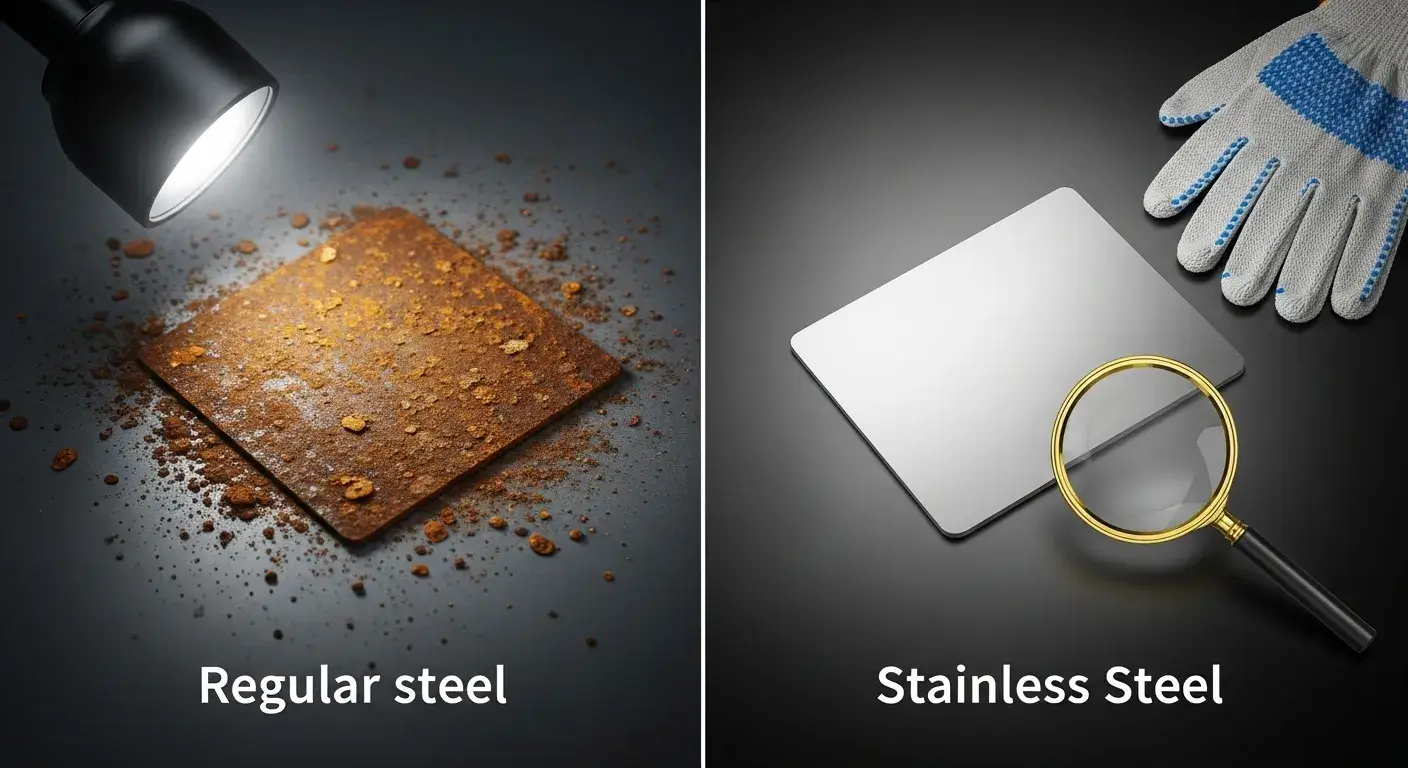
What happens if you use the wrong grade?
- It might corrode in humid or salty environments.
- It could be too weak or brittle for your design.
- You might overpay for a more expensive grade than needed.
Visual Inspection: Color and Surface Characteristics?
You might notice some differences in appearance. Try checking the surface tint.
300 series steel is silver-white after pickling, while 400 series may appear gray-white and slightly shinier.
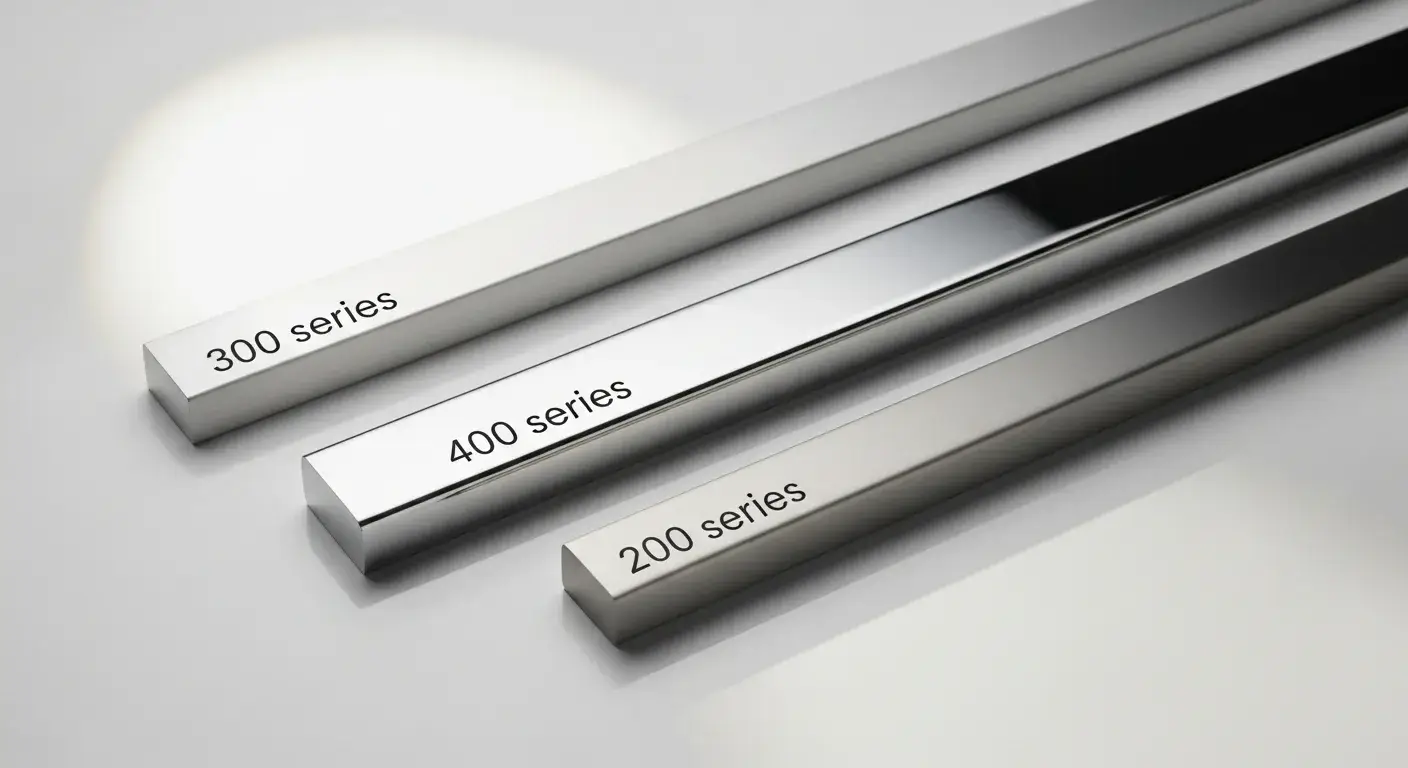
Use this method only for rough sorting:
- 300 series (e.g., 304, 316) – Jade-silver finish
- 400 series (e.g., 430) – Shinier gray finish
- 200 series – May resemble 300 but with less corrosion resistance
Using a Magnet to Differentiate Stainless Steel Types?
Magnetism is a common trick to sort stainless steel quickly. Try sticking a magnet to the metal.
300 series is generally non-magnetic3, while 400 series is magnetic.
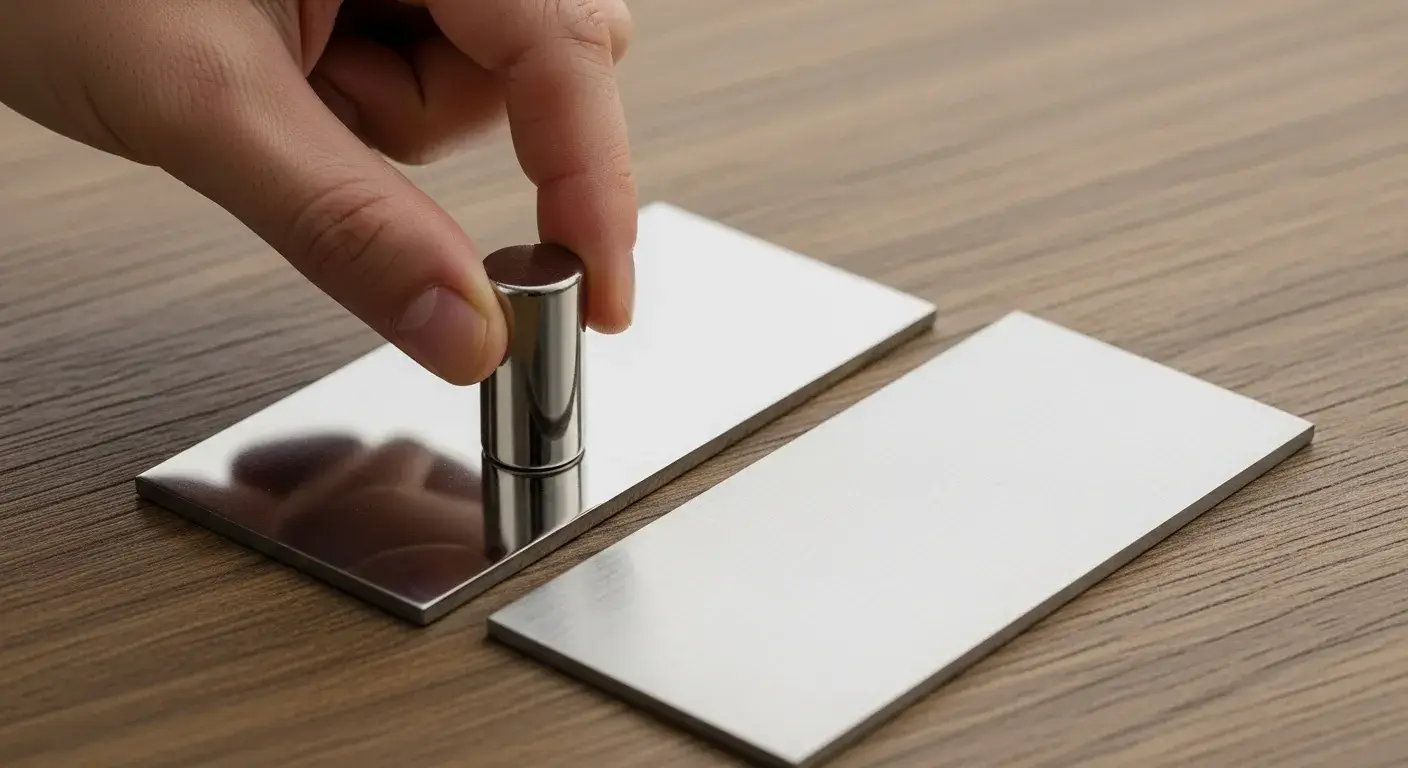
Things to keep in mind:
- Cold working can make 300 series slightly magnetic.
- If it’s magnetic, it’s likely 400 or 200 series.
- If not, it’s likely 304 or 316.
Copper Sulfate Test: How It Works and What It Reveals?
This test checks for the presence of plain carbon steel underneath.
Apply copper sulfate4 to a clean steel surface. Carbon steel turns reddish (copper deposit), stainless stays the same.
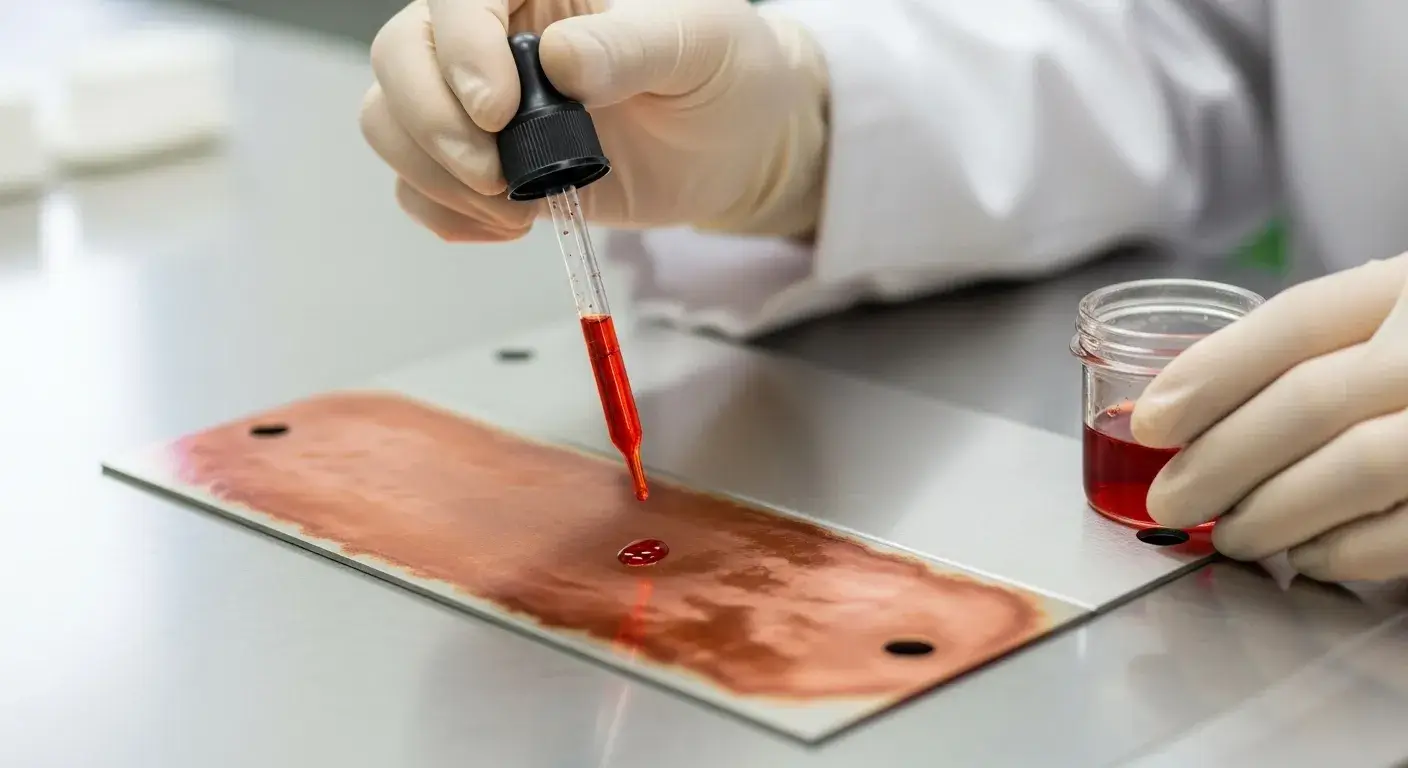
This test helps distinguish:
- Stainless steel – No visible copper reaction
- Carbon steel – Brown or red copper coating after test
Spark Testing: What Spark Patterns Tell You About Steel?
Grind the metal lightly and watch the sparks fly.
Different stainless grades spark in distinct ways based on manganese and carbon content5.

Use this method carefully:
- 304 steel – Few, long orange sparks
- Manganese steel (200 series) – Dense, short, bright sparks
- Carbon steel – Long, branching sparks
Acid Testing for Stainless Steel Grade Identification?
Acids react differently with different metals. Nitric or sulfuric acid can expose grades.
316 steel resists acid6 better than 304; lower grades may show pitting or discoloration.
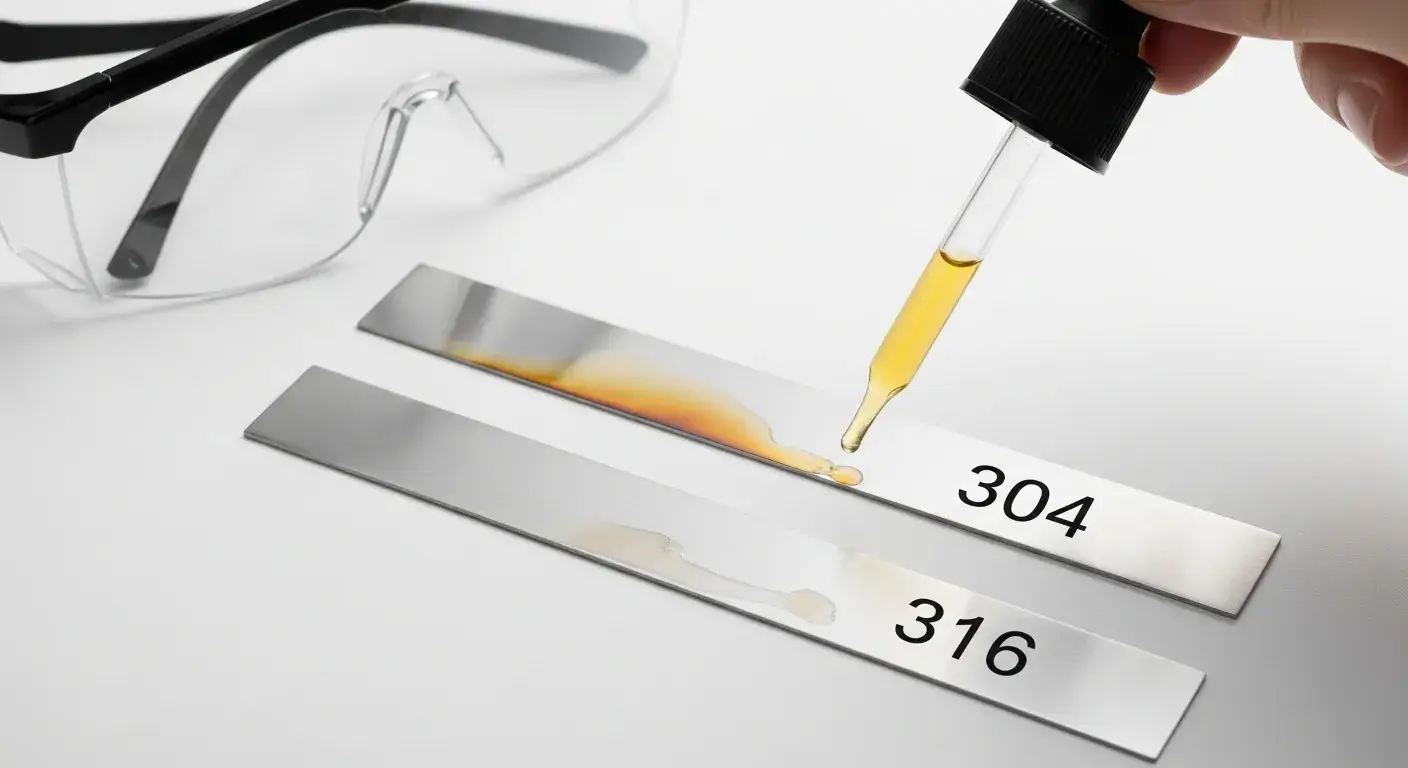
Follow safety rules:
- Wear gloves and goggles.
- Use dropper bottles for accuracy.
- Rinse thoroughly after testing.
Using Chemical Reagents for More Precise Identification?
Reagent kits are available to test for nickel and molybdenum.
A reagent test7 can show if it’s 304 (nickel content) or 316 (nickel + molybdenum).
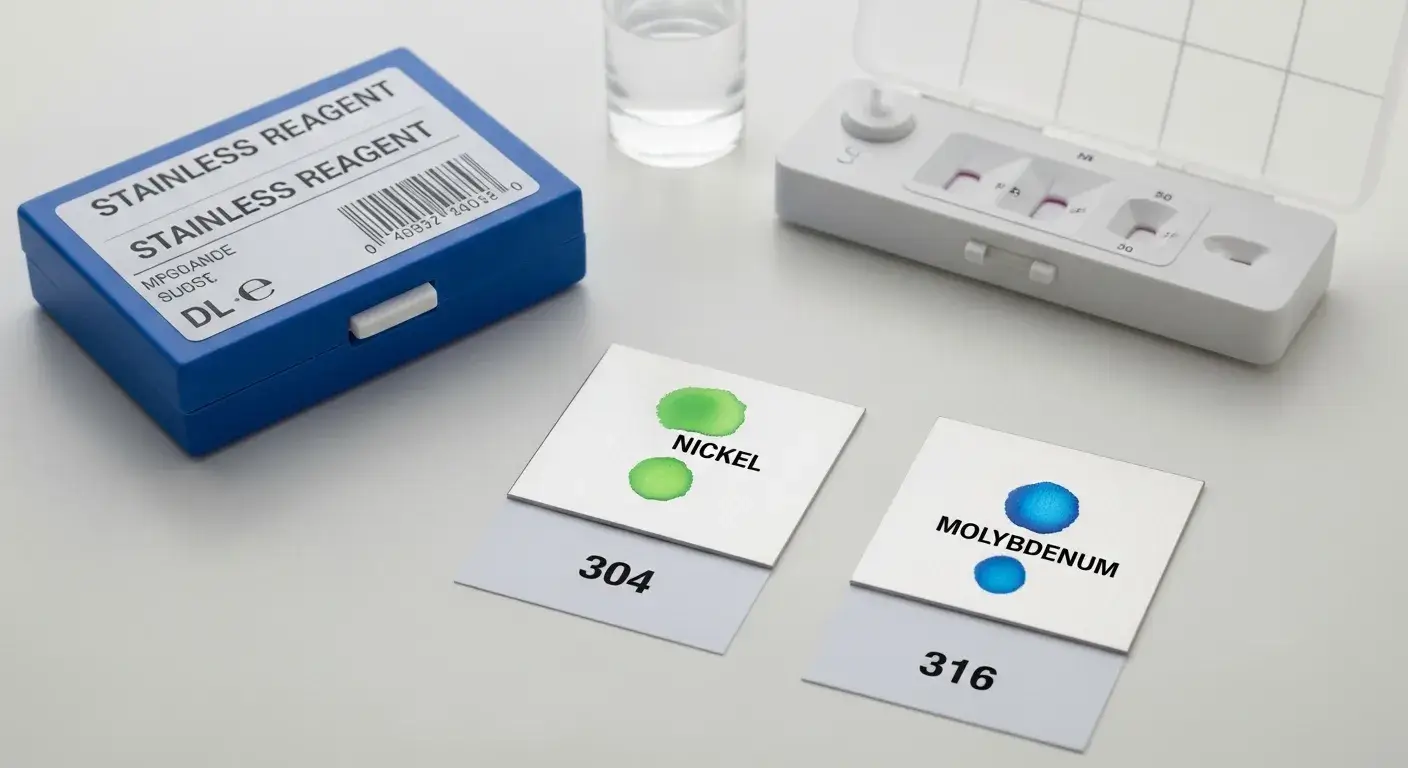
Benefits of reagent testing:
- Fast and portable
- Color-coded results
- Ideal for confirming assumptions from visual or magnet tests
Limitations of Simple Methods and When to Use Lab Testing?
Sometimes, home tests aren’t enough.
If you need precision, professional lab testing or spectrometry8 will give exact grade analysis.

Use lab testing when:
- Certification is required
- You need full chemical breakdown
- Simple methods give conflicting results
Conclusion
Simple methods like visual inspection, magnetism, and copper sulfate testing help identify stainless steel grades quickly. For accurate results, combine methods or use lab testing.
FAQs
Can all stainless steels be magnetic?
No. Most 300 series grades are non-magnetic, but cold work can make them slightly magnetic.
How can I tell if I have 304 or 316 stainless steel?
Use acid or reagent tests. 316 has molybdenum, offering more corrosion resistance.
Is spark testing safe?
Yes, with safety glasses and proper tools. It's best done by experienced users.
Does color really help?
Only for rough identification. Use other tests for confirmation.
Are chemical reagents easy to use?
Yes. Follow instructions closely for accurate color readings.
Footnotes:
-
Learn how to identify stainless steel using visual, magnetic, and chemical tests ↩
-
Understand differences in corrosion resistance and strength among stainless grades ↩
-
Check magnetism to distinguish 300 from 400 series stainless steel ↩
-
Use copper sulfate to tell carbon steel from stainless steel ↩
-
Discover what spark testing reveals about steel composition ↩
-
Compare acid resistance between 304 and 316 stainless steel ↩
-
Use reagent kits to test for nickel and molybdenum in stainless steel ↩
-
Consider spectrometry for precise stainless steel grade identification ↩

